Milton Glaser passed away last week, on his 91st birthday. I want to use my column this month to pass along a note expressing the gratitude I have for his generosity and wisdom.
First a bit of context. For the past 11 years I have led a group of students on a one week trip to New York. For eight of those trips, we were able to visit the great illustrator/designer Milton Glaser. An introduction was arranged by my colleague at CCA, Bob Ciano, a long time friend and associate of Mr Glaser. I was careful to never overextend our one hour annual audience. In all the times we visited him, he never repeated himself, but every group left his studio after the hour feeling that something undefinable and special had just happened.
Much has been written about Mr. Glaser, and many tributes to his generosity and genius have flooded the internet in recent days. When my class visited the studio, i used to ask students to write down their thoughts afterwards so they would remember them later. One student gave me a copy of her notes: What follows here is an essay by my former student Tara Chavez, www.tchavez.com me@tarachavez.com a brilliant artist in her own right, now living in France, written after our class visited Mr. Glaser’s studio in 2013. Please give it a read: there is undoubtably something in this essay for anyone in any creative field.
Thank you Tara, and of course thank you Mr. Glaser. I could never build up the nerve to call you Milton, but Ill never forget those 8 hours- one full day’s worth of your time, you gave our students.
Moments with a Master
A Talk with Milton Glaser
By Tara Chávez
March 202013 We gather around, quiet and polite on request, but as he comes in and takes his seat, navy sports jacket and silk scarf around his neck, we quiet upon intrigue of this man carrying the elegance of another era. His palms together, finger tips fanning out below his chin like some villain, all his grey and white hair coiffed like the devil into a pointed goatee and arched eyebrows, he stares around at all of us. “So, what did you tell them to expect when they came here?” Milton Glaser asks Robert, our professor, who sits shining with the eagerness of a child standing face to face with some baseball card hero, and in this room we are all students.
Robert starts the conversation with mention of a previous trip and a Shakespeare tapestry. Glaser responds with the explanation of his hunger for reality, for finding connections, the connections between all things: “reality hunger.” Life is a full circle of associations. Our role: to make new associations, new links, and new realities. Glaser speaks to us about collage, and appropriation, and, a philosopher’s idea, that all things are in fact plagiarism—an idea that tickles him. But he challenges that maxim with his advice that “something doesn’t have to exist for you to use it. You can invent it.” We can create it. That is art making, it’s creation, innovation, and progress. We are all inventors, alchemists, and like Robert tells it, wielders of a magic power. We are artists.
The questions from our group begin with the subject of inspiration. Milton Glaser responds, slightly dejected: “Inspiration, I don’t know what that word means.” He goes on about the myth of inspiration and artist’s block, and how there is only work or no work. “I do know that I am curious,” and while disapproving of the word, he supposes he is inspired by anything he can pay attention to. And here I connect, the thought often occurring to me that as children we are all curious, although not everyone thereafter. Someone once told me that all artists are children, and I believe it. Sometimes we are immature, selfish, emotional, but at the very least we are curious. Attention to the world pulls us away from the reality of time. If there is such a thing: reality, time. The conversation turns philosophical. Subjective reality. The answer is unimportant, only the question. We are all curious and it warms my heart to hear, that after eight decades, this man can still wake up and change his perception. We can always learn, always grow, and always be children new to the world.
The phrase sticks with me; “anything you can pay attention to is inspiring.” Listen with a pencil down and take heed. Beware the waning attention span being pulled through fingers to phone. I remember the difference between seeing and observing, in hearing and listening. I remember what it is to shut up, sit, and listen. Really listen. Only then can we, in exchange, learn to communicate.
For the first time in the entire trip, our group is fully silent and attentive. We are here in New York to see the studios, visit the companies, and talk with the professionals who are in the world of our desired illustration careers. But here sits a man beyond industry. Milton seems both old wise man and young child, looking to find where he fits between his idols. Somewhere between the ego and ambition of Picasso, and the humble work ethic of his mentor Giorgio Morandi. “Coraggio!” Glaser’s teacher would shout before etching each new plate. Courage is necessary for each and every work.
We sit and absorbed every bit of his tales. His recent full circle association between Vermeer, Piero della Francesca, and Van Eyck. The sincerity and beauty of his friend James McMullan’s new book “Leaving China.” The worst Piero, with a lion in it. His dislike for being told what to do and now setting his own limitations. His refusal to operate a computer, aware of its power over man. The trouble of travel is no longer worth it, although he enjoys being places. But amongst all his stories and little lessons, Milton Glaser touches on the very core of what we do.
“Art is fundamentally a gift to others, to culture, to community, and our role is to do no harm.” There again is that magic power. Robert knows it and Milton knows it. We have the power to create and, in so doing, to influence. It is our responsibility to use it well, and to remember that the work we do has consequences, even if we think little to nothing of our own contributions, it may reach somebody. It adds to the sum. He mentions Lewis Hyde’s book “the Gift,” and the story it tells of tribes passing along a present from one group to the next. The purpose was to never stop the goodwill behind the perpetual gifting. More importantly, the purpose was to not kill each other. This is our gift, Milton explains, to give the public something and “lessen our chances of killing each other.” He speaks in absolute earnestness, but still chuckles at the severity of this sentiment.
He illustrates further with mention of his famous “I Love NY” symbol, “Which was so successful,” he explains, “because of the affection it created among a community.” The city learned they had something in common, affection for the same place. Here I think of Chris Buzeli’s French Film Festival poster that made a small city erupt with pride in the images he created for them, and I think of John Hersey’s Dia de los Muertos icon for the San Francisco Giants. I think it must be such a joy to give that gift.
I suppose we all need to find our own path, our own way to give. We are creating for the public, but we are also doing a job. “Satisfying the client, the audience, and yourself may not always be possible.” We want to do something new, and original, yet also find someone willing to take a risk on behalf of our art. Compromises will have to be made. As with a relationship, a previous comparison of Robert’s, you must give and give in at times, but also know when enough is enough. And Milton agrees that we must be able to say no to money or work when it clashes with our beliefs.
Robert politely excuses us from taking up anymore of Milton Glaser’s valuable time. We all thank him and file down the stairs of the clean orderly studio. We stand in silence on the street, feeling the weight of moral obligation from a man who has seen the power in advertising and in art to influence and sway, but also unite a community. There is a sort of shell shock after witnessing something larger than yourself. I take what I can, words that resonate and words that I try to further understand. They will sit here with me and in time, as great words always do, their meaning will expand. Through experience I expect they will reoccur to me, some full circle association made when I am eighty-four, giving a talk to a group of eager students about to embark on their careers and trying to create something meaningful.


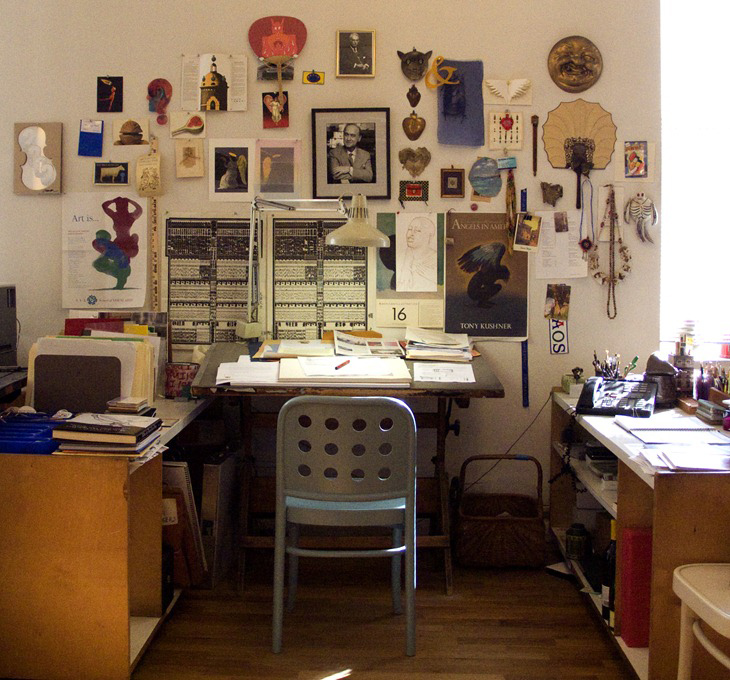
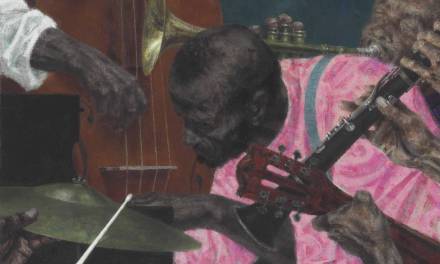
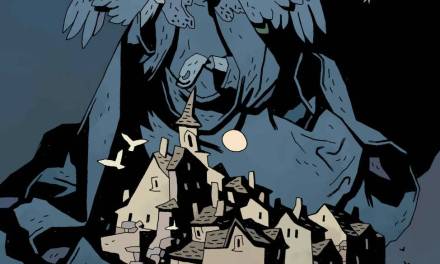
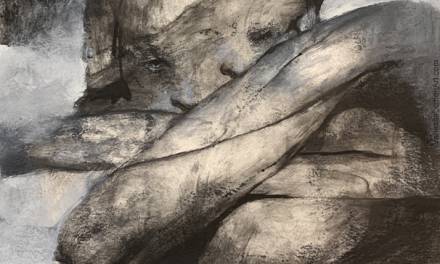
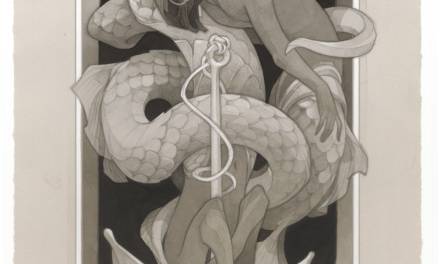
Stunning.
A moving tribute to a great man.